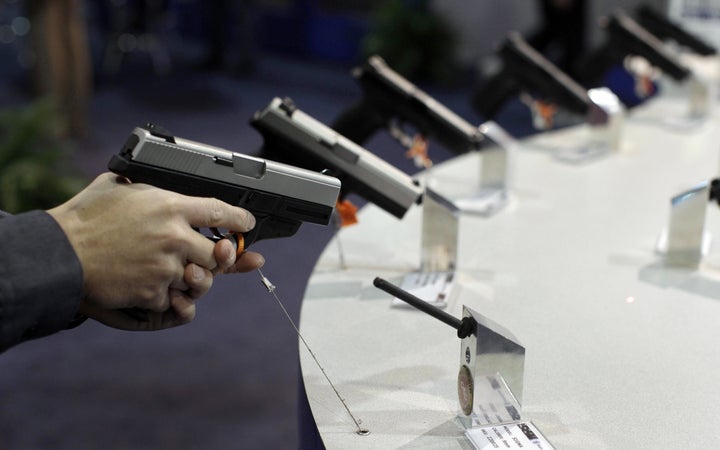
Lawmakers in Texas are pushing legislation again this session that would force higher education institutions to allow the concealed carry of firearms. A key argument in the campus concealed carry debate is one of statistics: will concealed handgun licensees raise the extremely low violent crime rate on college campuses?
Advocates of concealed handgun licensing have long cited statistics that suggest those with permits to carry are more responsible and law-abiding, on average, than the public. The statistics are at best misleading, and at worst represent an apples-to-oranges comparison.
The Texas CHL requires classroom training, range time, fingerprinting, and the same sort of criminal background check used for firearms purchase. Boosters argue that these requirements lock in licensees as upstanding, responsible individuals for life. Seemingly supporting this argument are statistics from the Texas Department of Public Safety, which misleadingly compare conviction counts instead of conviction rates; the reports fail to mention that CHL holders are a relatively small portion of the population.
In fact, licensees do commit crimes, as the DPS reports demonstrate, including on college campuses. Certain convictions - not arrests, note, but convictions - result in revocation of individuals' carry permits. The Texas Department of Public Safety used to make available conviction rates of CHL holders for weapons-related offenses, but several years ago, the gun lobby successfully lobbied the Legislature to hide such statistics. They argued that the complicated new law had been misunderstood by many licensees.
But the real statistical problem lies in the comparison in felony conviction rates between the general public (21-and-older) and concealed handgun licensees. This type of comparison is often referred to as a "two-island model," referring to similar populations from two islands, where no one ever moves from one island to the other. Herein lies the flaw: individuals are frequently moving between the general population and the CHL subset - in both directions - so the two-island model is inappropriate.
Proponents of concealed carry rest their arguments on the filter that prevents high-risk genpop individuals from moving to the CHL "island." If the filter is successful, they say, only law-abiding citizens will be licensed.
They neglect to address the lack of an effective filter in the other direction. A CHL holder may commit a crime - and faced with either poor lawyers, a good prosecutor, or strong evidence - that individual reverts to the general population. The relevant felony conviction is added to the CHL tally, but - importantly - the statistics do not follow the ex-licensee through repeat offenses.
Recidivism is an old problem in criminal justice. A 2002 Department of Justice study reported a re-arrest rate of 67.5% - as high as 78.8% for auto thieves - within three years of release from prison.
So, a more accurate comparison would examine the group of individuals who have at some point possessed concealed handgun licenses, in tandem with a random selection of people who never sought licenses. The study would have to be done retrospectively, taking into account recidivism over a period of at least a decade.
The concealed handgun licensing program is not without merit. It is possible that an appropriately chosen filter could identify individuals who are unlikely to commit crimes not just on the basis of a past blank slate. Such filters are less important at, say, age 40, where many have become settled in their habits, than at age 21, when most people are still making youthful mistakes. This hypothesis finds support in the DOJ recidivism study, which notes a negative correlation between age and re-arrest.
But the CHL training should not be compared to the Basic Police Officer Class (BPOC) in Texas, or subsequent in-service coursework required of all peace officers. More importantly, the NICS database background check for carry licensing and firearms purchase must not be confused with the type of background checks carried out by law enforcement for potential employees - which involve reference checks, a psychological evaluation, a polygraph, and several months of supervised training.
In conclusion, lawmakers should think carefully about the minimum age for concealed handgun licensing. In particular, they should be sensitive to major lifestyle changes - such as going off to college - that could disrupt established behavioral patterns.